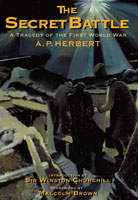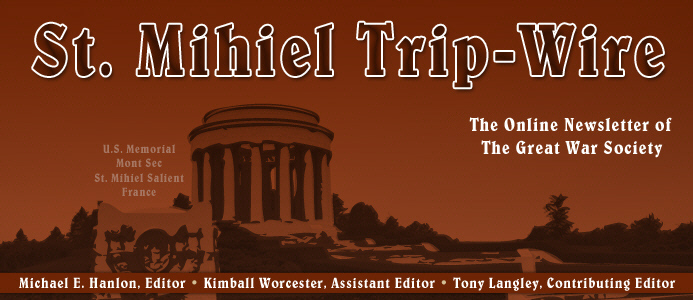


TRENCH REPORT: All quiet on this front. Have a great 2011. MH
This Month's Internet Feature
Readings of the Great Poems of the Great War on YouTube
The Soldier by Rupert Brooke
In Flanders Fields by John McCrae
Rendezvous by Alan Seeger
Break of Day in the Trenches by Isaac Rosenberg
The Dug Out by Siegfried Sassoon (read by author)
Anthem for Doomed Youth by Wilfred Owen
For the Fallen by Laurence Binyon
New at Our Own & Our Friends' Great War Websites
Click on Title or Icon to Access
|
New sources of aerial photography from the war have been discovered (or rediscovered):
At Great War Society Sites
Heroes on the Italian Front:
At WFA-USA Sites
The WFA-USA has rescheduled its special election on the by-law changes persuant to a merger with the TGWS. If you are a member please see this message from President Steve Suddaby:
http://www.wfa-usa.org/new/presreports.htm |
|
Major Literary Event: The war diaries of Ernst Jünger, author of Storm of Steel, have been published. They are described as thorough, unsentimental, and bloodthirsty. (link)
My spring 2008 battlefield group attended the reenactment of the opening of the First Battle of the Marne at Villeroy, France, the actual site of the engagement. An excellent video of the event has appeared online. (video)
Portraits of First World War Veterans Presented to the Queen Go on Display at Windsor Castle. (link)

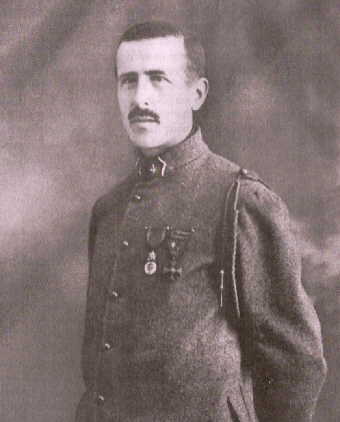
A Surprising Veteran: Corporal Pierre Teilhard de Chardin was a controversial French priest, paleontologist, and philosopher who attempted to reconcile original sin, evolution, and human consciousness in arguing that belief in evolution does not entail a rejection of Christian beliefs. During the war he served as an enlisted stretcher bearer with a Moroccan division and was decorated for his courage under fire, earning the deep respect of his mostly Islamic fellow soldiers. (See his comments under our "Favorite Quotes".)
|
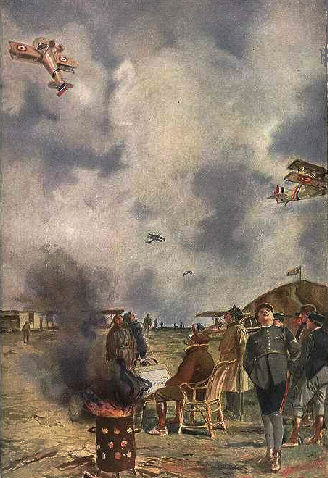
Notre Aviation de Guerre, Francois Flameng
|
GREAT WAR 2011 EVENT CALENDAR
|
A World War I Event Calendar
We continue to add important events to our WWI Calendar. There is simply more information than we can display here on the Trip-Wire. It is available for all, however, by downloading it from our Website.
(download calendar as Word document)
|
National World War I Seminar,
9-10 September, 2011
Citi-Garden Hotel
South San Francisco, CA
(Near S.F. International Airport)
(Details)
|
WFA-Pacific Coast Branch Annual Seminar
March 4-6, 2011
Bay Street Armory,
Victoria, BC
(flyer and registration form)
|
Western Front Association
U.S. Branch Chapter Meetings
Check for Your Region
Regularly Updated (details)
|
Great War Society Monthly Chapter Meetings
Berkeley, San Francisco, and
Palo Alto, CA
Regularly Updated (details)
|
Upcoming Events at the National World War I Museum
Kansas City, MO
"Christmas During War" Debuts Tuesday, November 23
Regularly Updated (details)
|
Send additions/corrections for our master schedule:
Email Response
|
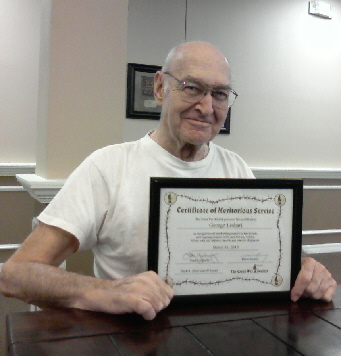
Friend and Longtime TGWS Member George Linhart Has Received the Society's 2010 Award for Meritorious Service.
Merry Christmas, Georgie

The unforgettable experience of the Front, in my opinion, is that of an immense liberty.
Those who enter a sector first let drop at the entrance of the first trench bay, the burden of social conventions. At the moment civilian life ends, the difference ceases between day and night. In place of the banal getting up and going to bed, the man in the lines sees only before him one vast trench of unforeseen length where rest and sleep are taken according to circumstances and occasions without well-fixed relation between light and darkness. In the line, one washes when one can. One often sleeps no matter where. All the constraints and compartmentalizations collapse like a house of cards. It is curious to observe in oneself how this overthrow of day-to-day slavery can bring satisfaction to the spirit, a little rebellious perhaps, but just and noble if one understands it rightly.
Corporal Pierre Teilhard de Chardin, S.J.
4th (Mixed) Moroccan Rgt.
|
|
|
|
Page Two
|
|
|
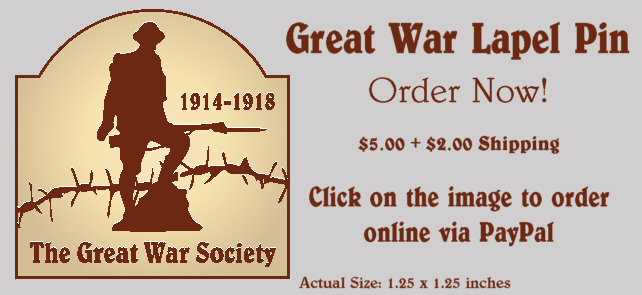 |
Steve Miller Visits
Sarajevo |
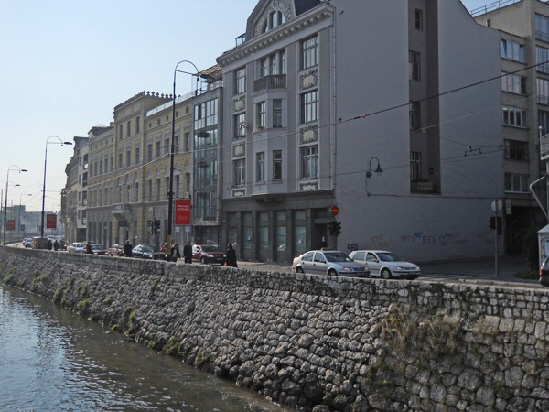
Site of Bomb Attempt of 28 June |
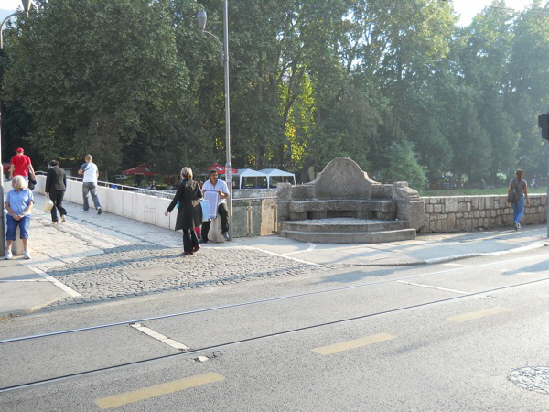
Gavrilo Princip's Original Position by Latin Bridge |
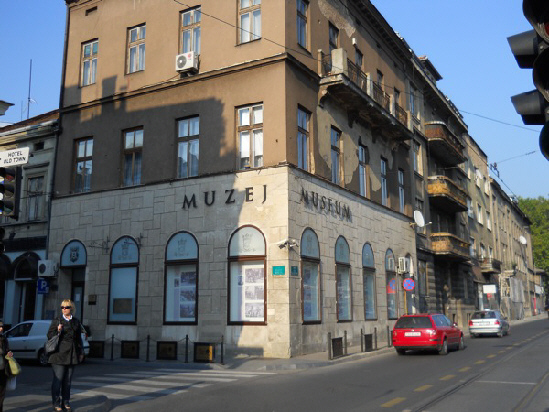
Assassination Site |
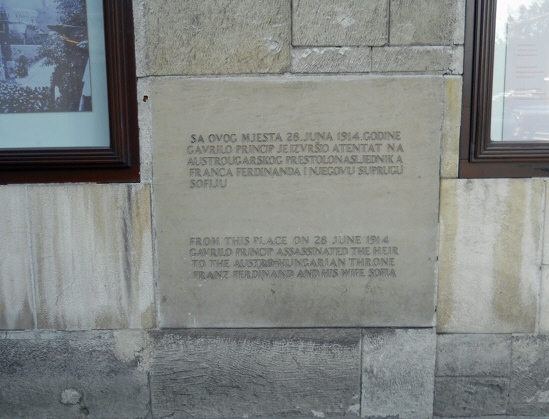
Marker at Assassination Site |
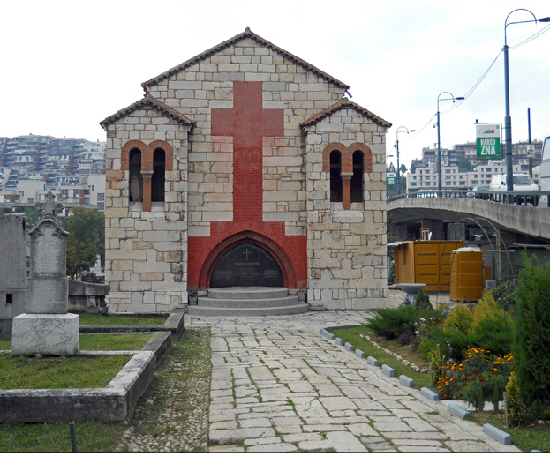
Chapel of Vidovdanski, St. Mark's Cemetery, Sarajevo:
Burial Site of the Assassins |
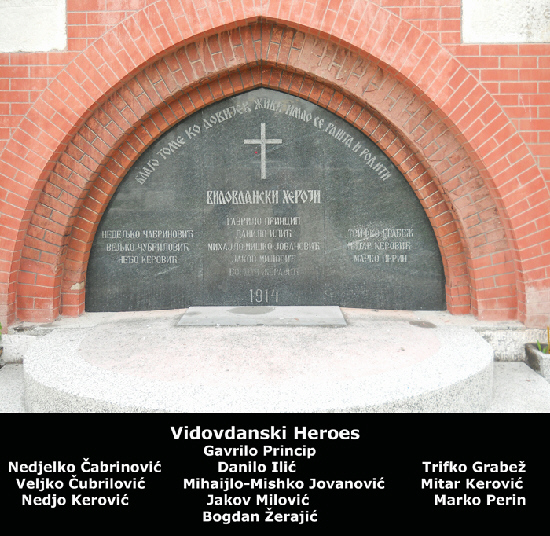
"Heroes of Vidovdanski" Marker |
|
|
World War I Headlines
in the
21st Century
|
|
Christina Holstein's Sleeping Beauties
Ouvrage de la Falouse at Belleray
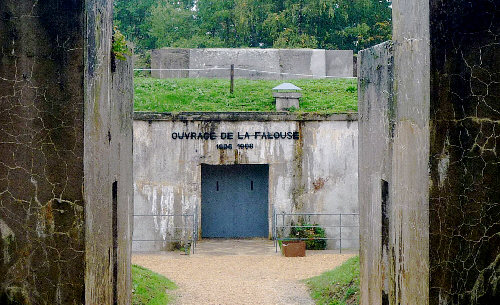
|
Surrounding the city of Verdun are two circles of forts and fieldworks that were, when they were built, the last word in military engineering. Today most of them lie buried in the forest, forgotten, crumbling, and, generally speaking, off-limits to visitors.
One of them -- the Ouvrage de la Falouse (the Falouse fieldwork) -- has recently been bought by four local men, and after two years of hard work it is open to the public
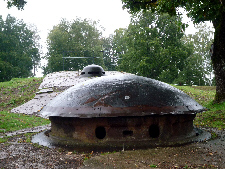
Retractable 75mm Gun Turret
La Falouse was the last field work to be built at Verdun, and although small it forms part of the main line of resistance on the left bank of the River Meuse. Situated a few miles to the south of the city where it was out of range of German artillery, it was not damaged during the Battle of Verdun, and between February and December 1916 La Falouse offered shelter, food, and medical care to thousands of men on their way to and from the front.
|
The new owners have cleared away the trees, fitted out the barrack rooms as they were in 1916, reequipped the kitchen, got the gun turrets working, and begun to re-excavate the underground tunnels dug by the garrison during the battle. It is a wonderful example of the work being done by local people with new ideas on how the Battle of Verdun can be presented. Don't miss La Falouse if you are visiting the Verdun area.
 Installation Kitchen
Here are some details: Ouvrage de la Falouse, GPS: N4907.3137 / E00524 0371. Email: ouvragedelafalouse@orange.fr. A multilingual Website will be running in a couple of months.

Underneath the Gun Turret
|
|
|

Indian Cavalry at the Somme
Flers Road, 15 September 1916
|
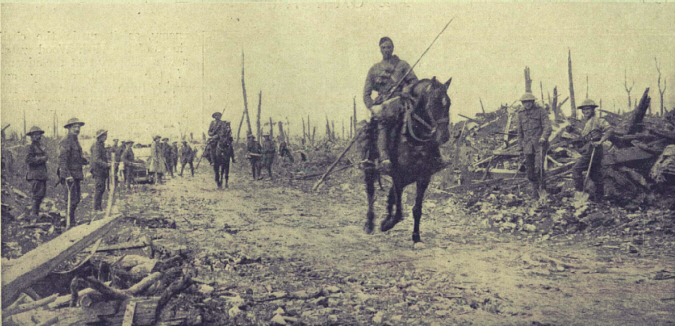
|
Click Here to Visit the Website of Our Contributing Editor Tony Langley
War in a Different Light

|
|
Subscribe to Our Online Magazine
|
|

|
|
|
Page Three
|
|
|
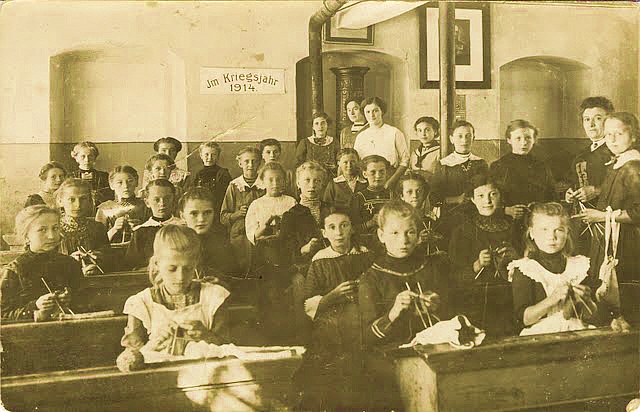
Knitting for Warriors
From Reader Joe Robinson:
This is an exceptional German photographic postcard of a girls' class during the war. Education for young ladies was very domestically oriented, and they attended school up to the age 14. The school was known as Volkschule, and it offered a hand work class which usually taught needlepoint. The class was replaced during the war with "Knitting for the Soldiers." The term for this was Kriegsstricken or war knitting. This particular postcard was sent to the father of two of the girls in this class.
|
|
|
 |
A Great War Classic Revisited
The Secret Battle,
A Tragedy of the First World War
by A. P. Herbert
Reviewed by Bruce Sloan
|
This is a novel, but it is based upon what the author saw. He enlisted in the summer of 1914 as an ordinary deaman, shortly commissioned as a sublieutenant of the Royal Navy, turned infantryman in the Royal Naval Division. He fought at Gallipoli and the Western Front, where he took part in most of the major battles from 1916 onward. Alan Herbert later served in WW II as a petty officer in the Royal Naval (Thames) Patrol, and he was knighted in 1945. He died on 11 November 1971, Armistice Day.
The Introduction, by Malcolm Brown, is nearly as engrossing as the story, as it sketches Mr. Herbert's life and the political and social environment which kept this work from becoming popular right after the war. In the 1928 Foreword, Winston Churchill wrote: "This story of a valiant heart tested to destruction took rank when it was first published a few months after the Armistice, as one of the most moving of the novels produced by the war. It was at that time a little swept aside by the revulsion of the public mind from anything to do with the awful period just ended."
The story is of Harry Penrose, a young officer whose wartime experiences parallel those of the author. Penrose is unsure of his courage, and in trying to sort himself out, his actions prove his valor. At Gallipoli, he assumes the role of scout, lying between the lines, night after night, and continues with incredible bravery when he is on the Western Front.
After much wartime introspection and courage, due to politics and the intransigence of the British officers above him, he is tragically court-martialed over an inaccurately reported incident during a shelling and shot for cowardice.
The opening lines of The Secret Battle: "I am going to write down some of the history of Harry Penrose, because I do not think full justice has been done to him. . ." The reader will certainly agree, and it may be partly due to his reading of this novel many years before, that the death penalty was not reintroduced, by decision of Winston Churchill, in 1942.
The story is alive with experiences of the trenches and the men who fought through the War. Although a novel, it reads like a firsthand account. After all, the author was there.
The Secret Battle: A Tragedy of the First World War, A. P. Herbert, Frontline Books, 2009, (Originally published by Methuen & Co. Ltd., London, 1919)
|
|
|
|


























